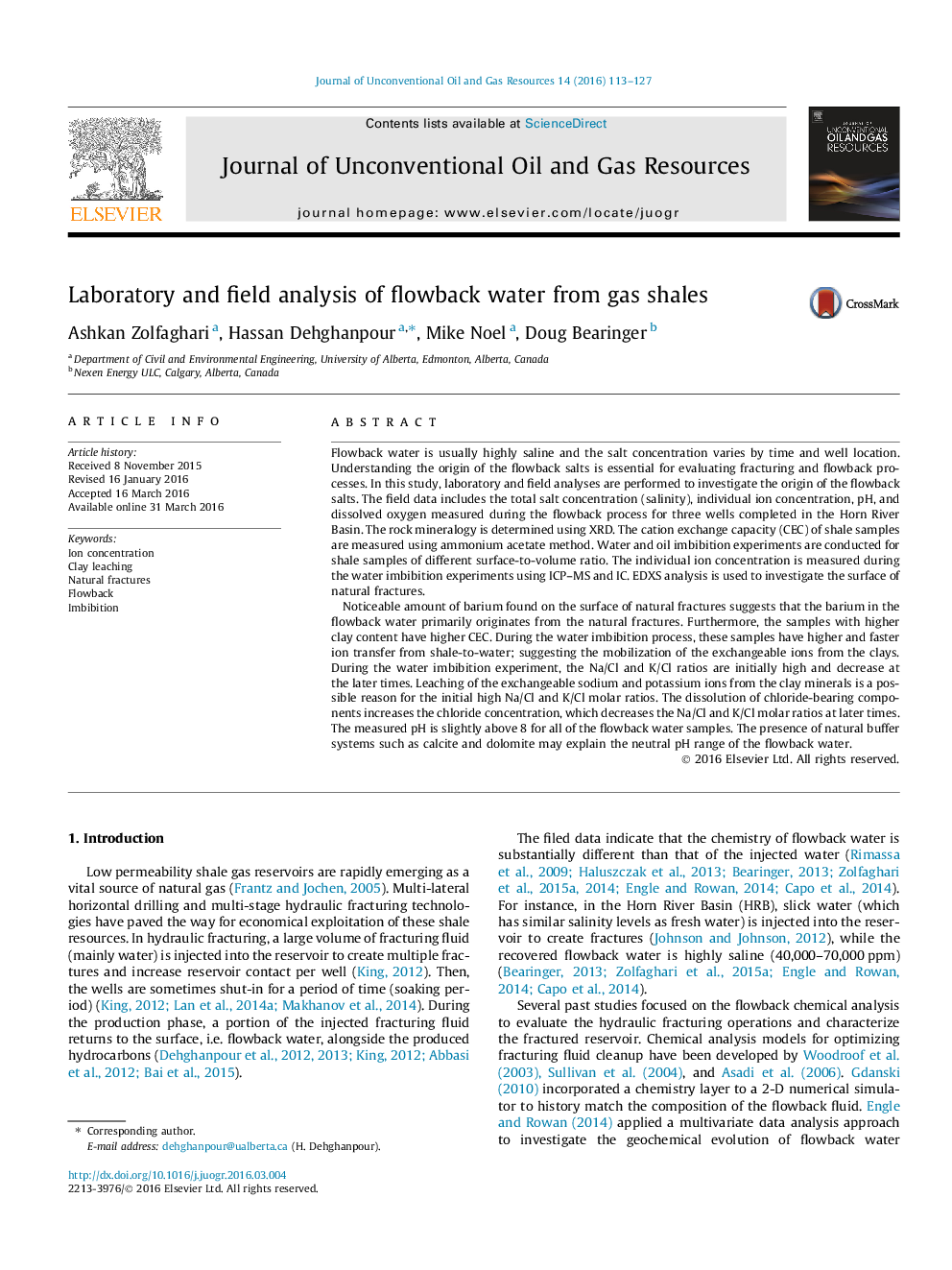| Article ID | Journal | Published Year | Pages | File Type |
|---|---|---|---|---|
| 1756668 | Journal of Unconventional Oil and Gas Resources | 2016 | 15 Pages |
Abstract
Noticeable amount of barium found on the surface of natural fractures suggests that the barium in the flowback water primarily originates from the natural fractures. Furthermore, the samples with higher clay content have higher CEC. During the water imbibition process, these samples have higher and faster ion transfer from shale-to-water; suggesting the mobilization of the exchangeable ions from the clays. During the water imbibition experiment, the Na/Cl and K/Cl ratios are initially high and decrease at the later times. Leaching of the exchangeable sodium and potassium ions from the clay minerals is a possible reason for the initial high Na/Cl and K/Cl molar ratios. The dissolution of chloride-bearing components increases the chloride concentration, which decreases the Na/Cl and K/Cl molar ratios at later times. The measured pH is slightly above 8 for all of the flowback water samples. The presence of natural buffer systems such as calcite and dolomite may explain the neutral pH range of the flowback water.
Related Topics
Physical Sciences and Engineering
Earth and Planetary Sciences
Geochemistry and Petrology
Authors
Ashkan Zolfaghari, Hassan Dehghanpour, Mike Noel, Doug Bearinger,
